
Rookwood Cemetery is a heritage-listed cemetery in Rookwood, Sydney, New South Wales, Australia. It is the largest necropolis in the Southern Hemisphere and is the world's largest remaining operating cemetery from the Victorian era. It is close to Lidcombe railway station about 17 kilometres (11 mi) west of the Sydney central business district. It was added to the New South Wales State Heritage Register on 2 April 1999.

Anfield Cemetery, or the City of Liverpool Cemetery, is located in Anfield, a district of Liverpool, Merseyside, England. It lies to the northeast of Stanley Park, and is bounded by Walton Lane to the west, Priory Road to the south, a railway line to the north, and the gardens of houses on Ince Avenue to the east. The cemetery grounds are included in the National Register of Historic Parks and Gardens at Grade II*.

Fort Sam Houston National Cemetery is a United States National Cemetery in the city of San Antonio in Bexar County, Texas. Administered by the United States Department of Veterans Affairs, it encompasses 154.7 acres (62.6 ha), and as of 2014, had over 144,000 interments. The cemetery was listed on the National Register of Historic Places in 2016.
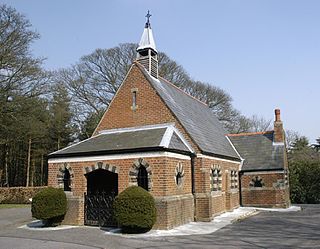
Aldershot Military Cemetery is a burial ground for military personnel, or ex-military personnel and their families, located in Aldershot Military Town, Hampshire.
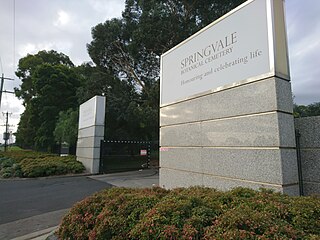
The Springvale Botanical Cemetery is the largest crematorium and memorial park in Victoria, Australia, located in the southeastern Melbourne suburb of Springvale.

Brockley and Ladywell Cemeteries were opened within one month of each other in 1858 and are sited on adjacent plots of previously open land. The two component parts are characteristic examples of the first wave of Victorian public cemeteries and are now part of the Brockley Conservation Area.

Layton cemetery is a graveyard located at Talbot Road in Blackpool, Lancashire in England. It was opened in 1873 when Blackpool parish church was replete with burying. The site encompasses 30 acres (120,000 m2), having been regularly expanded during its history. It is administered by Blackpool Council. A number of memorials in the cemetery are executed in Portland stone.
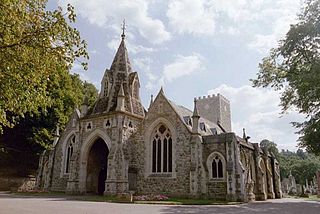
Putney Vale Cemetery and Crematorium in southwest London is located in Putney Vale, surrounded by Putney Heath and Wimbledon Common and Richmond Park. It is located within 47 acres (19 ha) of parkland. The cemetery was opened in 1891 and the crematorium in 1938. The cemetery was originally laid out on land which had belonged to Newlands Farm, which was established in the medieval period.
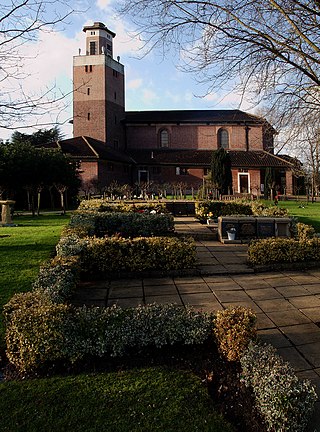
East Finchley Cemetery is a cemetery and crematorium in East End Road, East Finchley. Although it is in the London Borough of Barnet, it is owned and managed by the City of Westminster.

Beckenham Crematorium and Cemetery is a cemetery in the London Borough of Bromley, opened in 1876.
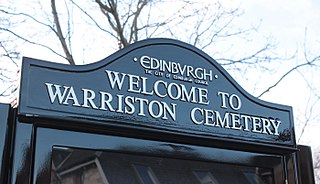
Warriston Cemetery is a cemetery in Edinburgh. It lies in Warriston, one of the northern suburbs of Edinburgh, Scotland. It was built by the then newly-formed Edinburgh Cemetery Company, and occupies around 14 acres (5.7 ha) of land on a slightly sloping site. It contains many tens of thousands of graves, including notable Victorian and Edwardian figures, the most eminent being the physician Sir James Young Simpson.

The English coastal city of Brighton and Hove, made up of the formerly separate Boroughs of Brighton and Hove in East Sussex, has a wide range of cemeteries throughout its urban area. Many were established in the mid-19th century, a time in which the Victorian "cult of death" encouraged extravagant, expensive memorials set in carefully cultivated landscapes which were even recommended as tourist attractions. Some of the largest, such as the Extra Mural Cemetery and the Brighton and Preston Cemetery, were set in particularly impressive natural landscapes. Brighton and Hove City Council, the local authority responsible for public services in the city, manages seven cemeteries, one of which also has the city's main crematorium. An eighth cemetery and a second crematorium are owned by a private company. Many cemeteries are full and no longer accept new burials. The council maintains administrative offices and a mortuary at the Woodvale Cemetery, and employs a coroner and support staff.

Karori Cemetery is the second-largest cemetery in New Zealand. It opened in 1891, and is located in the Wellington suburb of Karori.
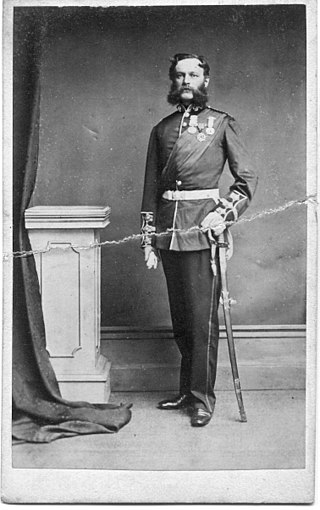
John Granville Harkness, J.P. was a major-general in the British Army during the Victorian era.

William McNeill Whistler was an American physician and a medical army officer for the Confederacy during the American Civil War. He was the younger brother of artist James McNeill Whistler.

Arthur Foord Hughes was an English genre and landscape artist.

Earlham Road Cemetery, Norwich also known as Earlham Cemetery or Norwich Cemetery is a cemetery located in Norwich which was officially opened on 6 March 1856 and covers 34 acres (14 ha). The cemetery is divided into two distinct sites by Farrow Road A140 which runs north–south across the site. To the east of the road is the original 19th century cemetery and to the west of the road lies the 20th century addition. Today, it caters for all faiths with separate burial grounds and chapels for Jews and Catholics and a growing one for Muslims together with two military cemeteries. The 19th century cemetery is designed with an informal garden cemetery layout with winding paths while the remainder is a more formal grid type which was favoured by cemetery designer John Claudius Loudon. Much of the original cemetery is a County Wildlife Site and contains grassland and a wide selection of mature trees.

Plumstead Cemetery is a cemetery in Plumstead, southeast London. It is situated south-east of Woolwich, to the north of Wickham Lane, west of Lodge Hill, and south of Bostall Wood.

Western Necropolis is a cemetery complex in Glasgow, Scotland located to the north of the city centre. As well as the actual Western Necropolis cemetery established in 1882, it is bordered by Lambhill Cemetery which opened in 1881, St Kentigern's Cemetery that opened in 1882, and Glasgow (Garnethill) Hebrew Burial Ground founded in 1989.

Enfield Crematorium is a cemetery located on the Great Cambridge Road, Enfield, London. It was opened in 1938 and consists of 50 acres (20 ha) of land, most of which is dedicated to the gardens of remembrance. The crematorium is a local listed red brick building.





















